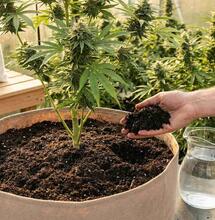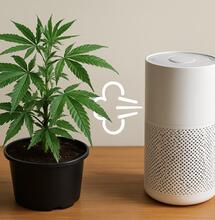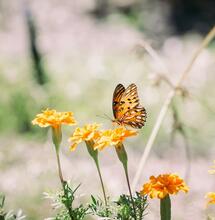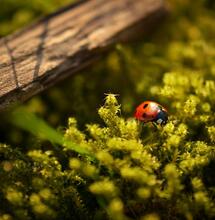How Can You Fight Cannabis Plant Pests the Natural Way?
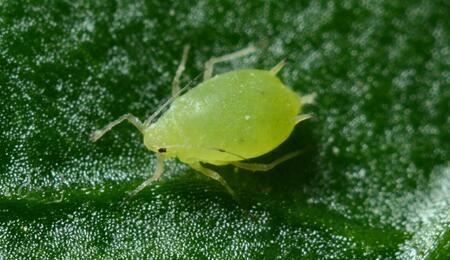
Whether you’re growing outdoors or indoors, identifying the enemy is the first step to protect your cannabis plant. Prevention, actually, is the easiest way to safeguard your crops from infection and infestation. A significant part of keeping cannabis plant pests away has to do with the setup and upkeep long before the crop has reached the flowering stage. From caterpillars to mites, this article outlines top predators that like to feast on cannabis, their tell-tale signs, and how to best remove them.
Cannabis plant pests are annoying. Just like any crop, cannabis can often find itself at the mercy of ravenous bugs, creeping for the next field feast. Suffice to say, unwelcome pesky critters can put a damper on the joy you get from your cannabis harvest. Which is why a robust cannabis plant pest control is recommended for your gardening efforts. Let’s see which are some of the most common insects and other pests that can attack cannabis, and what you can do to stop them doing damage to your plants.
8 Most Common Cannabis Plant Pests: Cannabis Plant Pest Control Tips
1. Ants
Ants are bad news for every cannabis grower. They are sort of deceptive pests as they don’t damage the plant directly, but are indicating that other natural predators are invading your crop. So when you spot ants on your cannabis plant, be sure that your problems are much bigger than just these hard-working critters.
Symptoms
Ants are usually attracted to cannabis plants because of the honeydew produced by aphids and whiteflies. As they feed on the plant’s honeydew for nutrients, ants would protect the aphids, allowing the colony to multiply. Additionally, ants use a specific way to dig tunnels, which can damage the root system and block the source of water circulation and nutrients among the roots.
Treatment
Cinnamon is known to be one of the most innocuous ants exterminators, as the insects are repelled by the smell and are killed by it. Growers can both sprinkle the cinnamon onto the ant nests, or add the spice while you are watering the crop. Another useful way to get rid of ants is by applying cornmeal into the entry points of the mounds. The invaders will try to eat the cornmeal and end up dead as they cannot process it. Additionally, dead ants are beneficial for the soil due to the aeration they put in the ground.
2. Aphids (Greenflies and Blackflies)
Tiny but extremely destructive, Aphids are one of the most annoying cannabis plant pests for many cannabis cultivators. These barely visible, 1-10 millimeter long vandals are usually green in color, but they can also be white, black, or red.
Symptoms
Because of their microscopic size, aphids are very easy to miss. They typically hang out on the undersides of the leaves, feasting on the nutrients and reproducing. They cause cannabis leaves to curl and become yellow. Another tell-tale sign of aphids is the presence of ants.
Treatment
While in a controlled environment such as indoors, aphids can destroy the entire growing process; outdoors, there are several natural predators that you can use for your cannabis plant pest control efforts. Ladybugs absolutely love feasting on aphids, so by introducing these helpful cute critters to your growing garden, you will encourage the intruders to stay away. Another solution growers can try is garlic oil mixture. First of all, prune off damaged or heavily infested leaves with the aphids, keeping them away from healthy plants. Then, hose the plants down and apply the garlic oil mixture or a vinegar and water solution, which the aphids hate.
3. Birds
When it comes to birds, they are a double-edged sword as they are both cannabis plant pests, and cannabis plant pest control factor. Birds might help you get rid of insects, but are also known to be little thieves as they are stealing the seeds.
Symptoms
Birds are easy to spot, but you can also check your crop regularly for disappearing seeds or other bird-plant interactions.
Treatment
Ideally, you should choose a reversible method, so the birds can get back after the plants have sprouted. One way is to place a bird feeder nearby. A classic solution would be to use scarecrows or shiny objects to scare off the birds, which could certainly be fun!
4. Red Spider Mites
Spider mites are one of the most common cannabis plant vermin. They are certainly no fun for cannabis growers and can create a huge hassle for the crop. These vicious creatures can damage the plant by sucking out valuable nutrients and chlorophyll from the leaves, killing the crop faster than you can say cobweb.
Symptoms
Red spider mites leave white spots on the leaves. There might also be black or yellow spots on both sides. Use a magnifying glass to be sure.
Treatment
As red spider mites thrive in dry environments and reproduce in high temperatures, make sure your plants are in a well-ventilated space with an average temperature below 77°F (25°C). Once spotted, the damaged leaves need to be treated by spraying a mixture of alcohol and water on the problematic areas. Other products that could help are potassium soap, neem oil, and ecotone.
5. Caterpillars
Caterpillars feed on plants at a fast rate because they need to vegetate to form their chrysalis. You don't want them as your cannabis plant pests; cannabis plant pest control is easy in this case, since caterpillars are easily detectable.
Symptoms
Check your plants for tiny teeth marks, translucent or yellow eggs, and black droppings on the leaves.
Treatment
Fortunately, caterpillars can be easily spotted and removed by hand. Alternative solutions would be applying garlic and pepper insecticide.
6. Whiteflies
These uninvited guests usually reside on the undersides of the leaves and feed on the plant matter. They are small winged insects and present a real problem for cannabis growers because of their high potential for spreading diseases.
Symptoms
One of the signs of whitefly infestation is the presence of small flies every time you shake the plants. Another visible evidence is yellowed leaves with white powder on the underside.
Treatment
The bad news is that whiteflies are rather stubborn little critters and it can be a pain to get rid of them. However, with smart pest management techniques such as introducing natural predators or planting repellent crops, you can protect your crop from these intruders. Planting colorful flowers like zinnias will help hummingbirds and insects which prey on the whiteflies. You can also plant basil which is a great repellent crop or spray the herbs with neem oil or potassium soap.
7. Thrips
This fast, tiny insect can be a real headache for growers, especially if the cannabis plants are from cuttings. Because thrips are incredibly fast, you have to act quickly to prevent this pest from wreaking havoc.
Symptoms
Use yellow sticky strips around the crop to identify a thrip’s plague, as they are bound to get stuck to it. Another sign is silver markings on a plant’s surface and brittle leaves.
Treatment
Spraying with neem oil or potassium soap is a useful technique to evict the squatters from your crop, as long as the flowering process has not yet started. If it has, you might need to introduce natural predators, such as wasps or orius (insidious flower bug).
8. Leaf Miners
These cannabis plant bugs with a self-explanatory name, dig tunnels into leaves where they feast and lay eggs. Leaf miners grow fond of the plant tissue and they do leave an ominous trail of their destruction.
Symptoms
Leaf miners leave long brown traces on the cannabis leaves.
Treatment
Place adhesive strips near the crop to achieve a successful cannabis plant pest control and stop adult miners from laying more eggs. To deal with the larvae, you can either remove the pest by hand or treat the plant with a natural insecticide known as spinosad.
It's critical to maintain vigilance when it comes to cannabis plant pests. Cannabis plant pest control is guaranteed when you pay attention and have a little patience with those tiny and puny invaders. The process might be time-consuming in some cases, but it's essential in order for growers to protect their crops and ensure the well-being of their plantation. Vermin and pests-free, your buds are certainly going to taste better, plus you'll find the fruits of your labor more enjoyable.
Also read on Soft Secrets:
